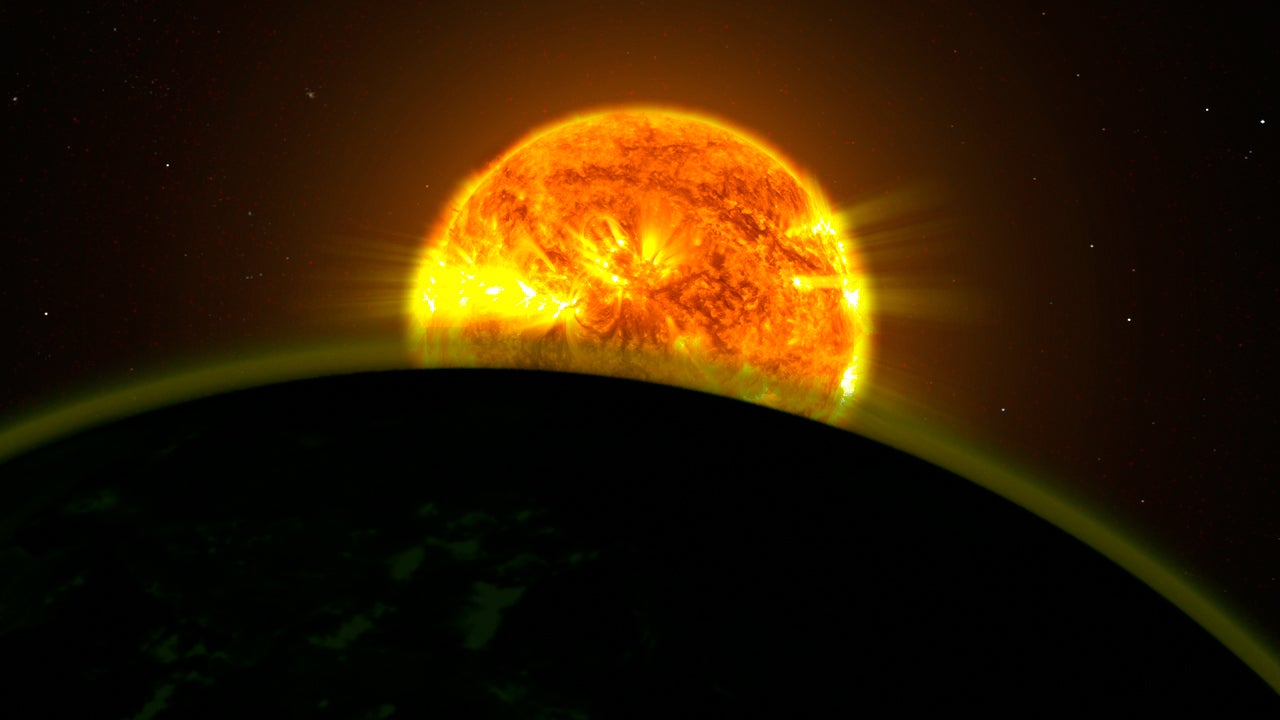Nasa's Hubble telescope finds signs of water on five distant planets
The water signatures are hazy due to atmospheric conditions, but scientists are 'very confident' that it exists

Your support helps us to tell the story
From reproductive rights to climate change to Big Tech, The Independent is on the ground when the story is developing. Whether it's investigating the financials of Elon Musk's pro-Trump PAC or producing our latest documentary, 'The A Word', which shines a light on the American women fighting for reproductive rights, we know how important it is to parse out the facts from the messaging.
At such a critical moment in US history, we need reporters on the ground. Your donation allows us to keep sending journalists to speak to both sides of the story.
The Independent is trusted by Americans across the entire political spectrum. And unlike many other quality news outlets, we choose not to lock Americans out of our reporting and analysis with paywalls. We believe quality journalism should be available to everyone, paid for by those who can afford it.
Your support makes all the difference.Nasa has reported that “faint signatures of water” have been found in the atmospheres of five planets outside our solar system, marking a further development in the search for planets capable of supporting alien life.
The presence of atmospheric water on exoplanets has been reported before, but Nasa says that this study is the first to “ conclusively measures and compare” the light signatures that denote the presence of water.
"We're very confident that we see a water signature for multiple planets," said Avi Mandell, a planetary scientist at NASA and the lead author of a paper, published today in Astrophysical Journal, detailing the new findings.
"This work really opens the door for comparing how much water is present in atmospheres on different kinds of exoplanets, for example hotter versus cooler ones."
The five exoplanets in question - WASP-17b, HD209458b, WASP-12b, WASP-19b and XO-1b – are all ‘hot Jupiters’, a class of exoplanet that orbits close to their host star and consequently have very high surface temperatures.
All five planets surveyed showed definite signs of water, although the strongest signatures were found in the atmospheres of WASP-17b and HD209458b.
"To actually detect the atmosphere of an exoplanet is extraordinarily difficult. But we were able to pull out a very clear signal, and it is water," said Drake Denning of the University of Maryland in College Park.
To determine what’s in the atmosphere of an exoplanet, astronomers watch the planet pass in front of its host star and look at which wavelengths of light are transmitted and which are partially absorbed. Image Credit: NASA's Goddard Space Flight Center
How do the scientists know?
Planets are very hard to spot when compared to the bright stars they share space with. As such less than 5 per cent of known exoplanets (planets that exist outside of our solar system) have been observed directly, and our main source of information about them comes from watching how star light changes when the planets pass in front of them.
When exoplanets transit in this way, they block off small amount of light emitted by their host star. Carefully measuring how much light is blocked off helps scientists work out the size of the planet.
Similarly, the planets will also block different parts of the light spectrum depending on what they are made of. Different molecules absorb different wavelengths of light, so working out which sections of the spectrum fail to make it helps astronomers determine the planet's composition.
In the case of these five exoplanets the water signals were all less pronounced than expected, with scientists explaining that this is likely due to "a layer of haze or dust" blanketing each of the five.
Video: Nasa's HD images of Saturn
Join our commenting forum
Join thought-provoking conversations, follow other Independent readers and see their replies
Comments